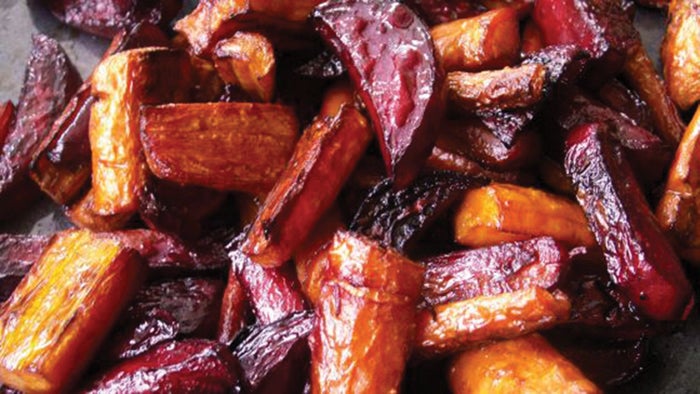Winter vegetables play a key role in healthy holiday diets
Published 12:00 am Friday, November 30, 2018

- Roasted beets and carrots make a colorful and delicious way to use fall vegetables.
By Michael O. Fine
Rowan Cooperative Extension
Traditionally, we tend to think of the spring and summer seasons as the time to eat fresh garden delights.
During this time, the abundance of fresh fruits and vegetables grown on local farms in Rowan County is available at farmer’s markets, on-farm stands or through CSA shares. The season kicks off in early April with the emergence of asparagus, spring greens, lettuces, spring onions and more.
By Mother’s Day, it’s fresh picked strawberries, as well as the first of the summer squash and cucumbers. Tomatoes, blackberries, peaches and blueberries soon follow alongside a large selection of summertime produce.
As fall approaches, folks desiring to maintain a healthy diet while using homegrown or locally purchased foods find they have to get little more creative. It should be mentioned here that easy-to-use fruits and vegetables such as apples, lettuce, carrots, tatsoi, spinach, “spring” onions (or spear onions) can also be harvested in the fall and are easy to prepare in salads.
Nevertheless, the majority of the choices available in the fall like root crops, greens, cabbage, broccoli, cauliflower and winter squash do tend to take a little bit more preparation and creativity to cook with.
Time definitely plays a role in limiting the amount of vegetables we consume during the fall and winter months. Whether we have children involved in school activities and sports, or the hustle and bustle of the holidays overwhelms us, time always seems to be in short supply. Consequently, winter is a crucial time in which our bodies need to be fortified with proper nutrition in order to maintain a strong immune system.
To help us maintain good eating habits in the winter months and especially during the holiday season, here are a few ideas that can save time while providing our bodies with the daily recommended 4-6 servings of fruits and vegetables we need.
1) Roasted root crops: Place beets and carrots in a 9-by-13-inch baking dish, drizzle with 1 tablespoon of olive oil, sprinkle with sea salt, and toss to coat. Cover the dish with aluminum foil and bake the vegetables in a preheated 400-degree oven for 45 minutes to 1 hour. Once the flesh can be easily penetrated with a fork, remove the dish from oven. These roasted beets and carrots go well with fish, pork, beef and chicken. Store the leftovers in the refrigerator as they make great a topping for a salad later in the week.
2) To feed a crowd on a budget, stir-fried cabbages, broccolis, cauliflower and greens can be sautéed together with olive oil, garlic and onions and spread over noodles or rice. Using a base like rice or noodles can take a handful of veggies and turn them into a rounded meal with food left over. The leftovers can be frozen in meal-sized containers for a later date when time doesn’t allow us to cook a wholesome meal from scratch.
3) Soup and stews: Nothing is more soothing in the winter months than a good vegetable-based stew. Stews also give us an easy way to incorporate multiple vegetable varieties into our diet while providing multiple meals in a single cooking effort. Again, leftovers go a long way with this option.





